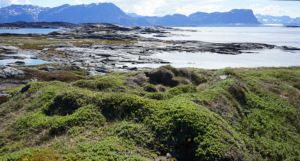News
Greenland landscape could become UNESCO Heritage site
This article is more than 8 years old.
The culture minister, Mette Bock, submits application for historic Inuit hunting grounds Aasivissuit – Nipisat

A sprawling landscape rich in beauty, wildlife and history (photo: Jens Fog Jensen – Natural History Museum)
Denmark has submitted Greenland’s Inuit hunting grounds ‘Aasivissuit – Nipisat’ to become a UNESCO’s World Heritage site.
The Arctic landscape could potentially become the ninth culture and nature gem to be included from the Danish Commonwealth on UNESCO’s list of valuable world culture and nature heritage sites.
“We have many cultural pearls and beautiful nature areas in the commonwealth that we need to protect and raise awareness of,” said the culture minister, Mette Bock.
“The unique hunting landscape Aasivissuit – Nipisat in Greenland is an obvious candidate to be added to the world heritage list, so I’ve submitted an application to UNESCO so even more people can become aware of the attractions we have on offer.”
READ MORE: Denmark gets two new places on the UNESCO World Heritage List
A Greenland double?
Aasivissuit – Nipisat covers an area of almost 4,000 square kilometres, making it larger than Funen and its surrounding islands, and it also contains numerous ruins and ancient monuments that document the earliest migration of humans to Greenland around 4,500 years ago.
The area is located in the central part of west Greenland between the towns of Kangerlussuaq and Sisimiut. The massive ice-free areas rich in wildlife in the ocean laid the foundation for the first people migrating to Greenland from North America all those millennia ago.
UNESCO is expected to make a decision regarding Aasivissuit – Nipisat during the summer of 2018, while the south Greenland landscape of Kujataa will be up for discussion this coming summer.
The commonwealth currently has eight sites on UNESCO’s World Heritage List: Kronborg Castle, Roskilde Cathedral, the Jelling Stones, the Stevns Klint white chalk cliffs in Zealand, the Vadehavet Sea (Wadden Sea), the Ilulissat Ice Fjord in Greenland, the Moravian Church Settlement in Christiansfeld and King Christian V’s forest in northern Zealand – the latter two made the list in 2015.






































